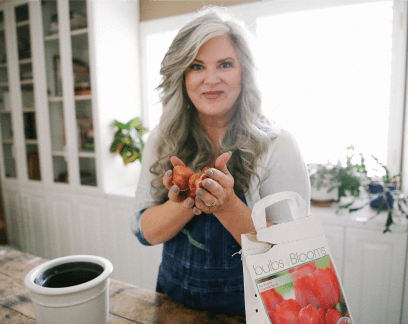Food supplies The plantation owners provided their enslaved Africans with weekly rations of salt herrings or mackerel, sweet potatoes, and maize, and sometimes salted West Indian turtle. Because this diet was low in vitamins and minerals, many slaves became ill. Sugar plantations. The Final Passage was the journey from the port of disembarkation in the Americas to the plantation or other destination where they would be put to work. What type of electrical charge does a proton have? After unsuccessful experiments with growing tobacco, the English colonists tried growing sugarcane in the Caribbean. [6] If the home treatment did not help to improve the slave's condition, they would then send them to the physician or ask the doctor to come to the plantation. How much food did the slaves eat? At the end of the holidays, sickened by the excessive alcohol, the hungover men felt "that we had almost as well be slaves to man as to rum." Other uncategorized cookies are those that are being analyzed and have not been classified into a category as yet. Morning meals were prepared and consumed at daybreak in the slaves' cabins. Through the years at Oak Alley, records indicate that there were a total of 220 slaves. Merrill and Dr. Samuel A. Morning meals were prepared and consumed at daybreak in the slaves' cabins. Photo credit: Gilbert Stuart. Booker T. Washington was born a slave on the Burroughs plantation in Franklin County, Virginia on April 5, 1856. On a typical plantation, slaves worked ten or more hours a day, "from day clean to first dark," six days a week, with only the Sabbath off. Ive been interested in food and cooking since I was a child. "Slaves were also given intoxicated drinks, so they would have little time to think of escaping. He loves to eat, he loves history and he loves to talk. "There are certain things. People who may not feel comfortable talking about slavery feel OK talking about sweet potatoes and ham hocks. COPYRIGHT (C) 2017 - ALL RIGHTS RESERVED - BLACK THEN The following year, Jamaica became Crown Colony, and conditions improved considerably. Advertisement cookies are used to provide visitors with relevant ads and marketing campaigns. Most plantation owners gave a ration of food at the beginning of the week. [2] However, many slaves had trouble digesting lactose (in dairy products) because it was not a common staple in their diets. Most Caribbean islands were covered with sugar cane fields and mills for refining the crop. Slave shackles were common items used as early as the 15th century to chain slaves, either on the wrists, ankles or neck. As many as 100,000 slaves were put to death in a single day in the US during the 1800s, according to an estimate by the University of Maryland. Advertisement cookies are used to provide visitors with relevant ads and marketing campaigns. The food was to ensure that the slaves were able to eat while traveling to their new way of life. The cake was originated in the Congos and was a cooked and prepared by enslaved Africans on plantations. [12] During these surgeries, the women were not under anesthesia, only an ineffective opium that resulted in constipation and nausea instead of anesthetic. They ate bread, pork and corn but it was mostly stale food like bread. Why methane is called saturated hydrocarbon? Cure,", "The Carmichaels and the Health Care of Slaves", https://en.wikipedia.org/w/index.php?title=Slave_health_on_plantations_in_the_United_States&oldid=1137821318, Articles with unsourced statements from December 2014, Wikipedia articles needing page number citations from October 2019, Creative Commons Attribution-ShareAlike License 3.0, This page was last edited on 6 February 2023, at 16:58. John Burnside was the largest sugar planter in Louisiana. "It was a form of bread and circus," says Opie. It was often shared with the field workers. What crops did slaves grow on plantations? 3 What was it like to live on a sugar plantation? They would also have a dish of gravy or soup, bread, and maybe vegetables. He did so by bartering pieces of bread he had free access to it; in Baltimore, the urban codes of slavery were less harsh than in rural Maryland for lessons in literacy. build there own homes. At 20, he ran away to New York and started his new life as an anti-slavery orator and activist. The fact that slaves came from a variety of different countries meant that the diets of slaves were highly diverse. Michael Twitty wants credit given to the enslaved African-Americans who were part of Southern cuisine's creation. Materials called palm cabbage or palmetto cabbage is taken from the center of the tree and either cooked or fermented for wine. Frances Anne Kemble, Journal of a Residence on a Georgian Plantation in 18381839 (1863; New York: Meridian, 1975), 6970. Slaves received only enough food to keep them alive. What are various methods available for deploying a Windows application? The cookie is set by GDPR cookie consent to record the user consent for the cookies in the category "Functional". Pone bread was mush that was made from cornmeal and often ate with the hands, the dish was noted as early as 1739. These glossy servants constituted "a sort of black aristocracy," wrote Douglass. Sugar plantations were massive complexes with a series of buildings and a large labor force. During their limited leisure hours, particularly on Sundays and holidays, slaves engaged in singing and dancing. His mission is to explain where American food traditions come from, and to shed light on African-Americans' contributions to those traditions which most historical accounts have long ignored. 1 What did slaves eat on sugar plantations? From the age of ten, they were assigned to tasksin the fields, in the Nailery and Textile Workshop, or in the house. Vegetable patches or gardens, if permitted by the owner, supplied fresh produce to add to the rations. Weekly food rations -- usually corn meal, lard, some meat, molasses, peas, greens, and flour --were distributed every Saturday. When the master had a party. [2] When it did become available, it was first given to whites and if any remained, then to slave children. Douglass was born on a plantation in Eastern Maryland in 1817 or 1818 he did not know his birthday, much less have a long-form birth certificate to a black mother (from whom he was separated as a boy) and a white father (whom he never knew and who was likely the "master" of the house). Douglass sounds even angrier at these obligatory orgies he calls them "part and parcel of the gross fraud, wrong, and inhumanity of slavery" than at other, more direct forms of cruelty. Okra was another food that arrived through the transatlantic slave trade in the 1600s. By the time of the American Revolution Black-eyed peas were firmly established in America and a part of the cuisine. These cookies ensure basic functionalities and security features of the website, anonymously. The Guinea corn was used by Africans to make bread. On the plantation, enslaved people continued their harsh existence, as growing sugar was gruelling work. The accommodation provided for slaves usually consisted of wooden shacks with dirt floors. These foods are commonly eaten in the U.S. today. Slaves from Louisiana ate a lot more seafood than slaves from the South. Related to Hausa via Arabic kusha. Slaves took hominy which is (Indian corn) and made grits. "There was no sense of their personal stories, no sense of their familial ties, no sense of their personal likes or dislikes," he says. Hulton Archive/Getty Images In colonial America, slaves from west Africa made many a plantation owner rich by growing a particular high-quality variety of rice. But if deprivation was one form of control, a far more insidious and malicious one was the annual Christmas holidays, where gluttony and binge drinking was almost mandatory. "And everybody has some kind of food tradition in their family. In 1740 the Havana Company was formed to stimulate agricultural development by increasing slave imports and regulating agricultural exports. Some slavers offered their slaves the so-called African meal once per day, followed by a European meal in the evening, which consisted of horse beans boiled to a pulp. The typical slave-ship diet included rice, farina, yams, and horse beans. Slaves combined food from Africa with local ingredients okra is from Africa, hominy is from the Americas. They were later called cornfield peas, by George Washington because of the early custom of planting them between the rows of field corn. The dish is still popular in many parts of New Orleans. African cooks who prepared the meals in the Main House introduced their native foods to the planters. There are contrasting views on slave's diets and access to food. Millet bread was an African food provided for cargoes by Africans who were enslaved. [13] Slave owners came to Sims in last attempt efforts to save their investments. Weekly food rations usually corn meal, lard, some meat, molasses, peas, greens, and flour were distributed every Saturday. Meat was not regularly consumed as part of a daily diet but mainly for special feasts and rituals. There was no way to distinguish the bread from the vegetables or meat. Enslaved people created variety in their diets by keeping gardens, raising poultry, foraging for plants, fishing, and trapping and hunting wild animals. When there were no partitions each family would fit up its own part as it could; sometimes they got old boards and nailed them up . The health of slaves on American plantations was a matter of concern to both slaves and their owners. "There you go." Today's meal is kitchen pepper rabbit, hominy and okra soup. For instance, what would happen if slaves ate the master's food? Enslaved people who became sick were often denied food and left to die. You can have an absolutely world-class meal of fried chicken, pork chops, fried cabbage, fried okra, rutabagas, creamed corn, even a whole turkey if it happens to be Thanksgiving. "There you go.". Viagra Generico Pagamento Alla Consegna Cialis 10 Mg Bestellen Kamagra Canadian Pharmacy. While the plantation owners may have considered the rations sufficient for feeding their workforce, many of the enslaved people did not. George Warren/National Archives The finished rabbit, which would have been hunted by slaves and shared among dozens of people. (A Day In History) What kind of food did slaves eat? But I was touched too, mom.". Okra was popular among the African women because they used it to produce abortion. What are 6 ways to prevent infectious diseases? 1866-14th amendment passed, making plantation owners lose more hold on their workers. At planting or harvesting time, planters required slaves to stay in the fields 15 or 16 hours a day. There were many African grown crops that traveled along the slave ship with slaves. A plantation slave typically would eat a hanfull of rice and drink milk. [2], The masters only gave slaves pairs of "gator shoes" or "brogans" for footwear, and sometimes children and adults who were not working had to walk around barefoot. Of course, they werent free. Food offers an opening to difficult, but important, conversations. Vegetable patches or gardens, if permitted by the owner, supplied fresh produce to add to the rations. The first plantations in the Americas of sugar cane, cocoa, tobacco, and cotton were maintained and harvested by African slaves controlled by European masters. His three adjacent estates contained 22,000 acres, 7,600 of which were under cultivation. His teachers were white neighborhood kids, who could read and write but had no food. Vegetable patches or gardens, if permitted by the owner, supplied fresh produce to add to the rations. What were the conditions like on slave plantations? Again the slaves barbecued the ribs and the master ate. " If caught, say, eating an orange from the owner's abundant fruit garden, the punishment was flogging. hide caption. Address African descendants continued to make it in Savannah, Georgia; in South Carolina the palmetto tree is the source. The average lifespan of a slave was about 20 years, which was not much different than the average slave in the US today. The leftovers were referred to by Africans as juba, jibba, or jiba. Today's meal is kitchen pepper rabbit, hominy and okra soup. He says, "It's like the equivalent, you know I'm Jewish, so I guess I can say this the equivalent of having a bar mitzvah at Auschwitz. "If you know what people eat, you can find out where they're from," Opie says. Slaves were fed one meal a day with water, if at all. Historian U.B. It's just a line here and a line there. The settlements required a large number of laborers to sustain them. Hi [2] Additionally, there is some scientific hypotheses behind blacks more often being lactose intolerant than whites today. What did the slaves eat on the plantations? Phillips found that slaves received the following standard, with little or no deviation: "a quart (1 liter) of cornmeal and half-pound (300 gm) of salt pork per day for each adult and proportionally for children, commuted or supplemented with sweet potatoes, field peas, syrup, rice, fruit, and 'garden sass' [vegetables]". At Monticello, because of Jefferson's years in Paris, European cuisine was thrown into the mix. The slaves who worked in the fields would often go out and catch wild game for their family and close slave friends. Then, other foods made available to slaves are listed, including: bacon, molasses, potatoes, poultry, and eggs. How can global warming lead to an ice age? But for him, reviving slave culture is also an act of defiance. That is why the "middle passage" or journey of slaves from the African coast to Europe . Some of the foods that could be consumed by slaves were beans, peas, corn, wheat, rice, oats, rye, barley, wheat flour, oatmeal, wheat bran, maize, apples, pears, beets, carrots, beets, carrots, apples, pears, berries, honey, currants, raisins, lemons, raspberries, plums, kiwi fruit, lychees, peaches, figs, pomegranates, oranges, grapes, peaches, pomegranates, oranges, figs, peaches, grapes, plums, melons, zucchini, cucumbers, oranges, grapes, melons, zucchini, cucumbers, oranges, grapes, melons, zucchini, cucumbers, oranges, grapes, melons, zucchini, cucumbers, oranges, grapes, melons, zucchini, cucumbers, oranges, grapes, melons, zucchini, cucumbers, oranges, grapes, melons, zucchini, cucumbers, oranges, grapes, melons, zucchini, cucumbers, oranges, grapes, melons, zucchini, cucumbers, oranges, grapes, melons, zucchini, cucumbers, oranges, grapes. What was a slaves diet? "It's really been in the past few years that people come here and they say, 'Wow what did the slaves eat? But opting out of some of these cookies may affect your browsing experience. one [peck], one gallon of maize per week; this makes one quart a day, and half as much for the children, with 20 herrings each per month. Slavery features in the Mesopotamian Code of Hammurabi (c. 1750 BCE), which refers to it as an established institution. "He made me cry when he looked me in my eyes and said, 'I wanted you to be able to bring your son here, and when you leave here, you both hold your head up because your part of American fabric.
Why I Left Islam To Become Sikh,
Town Of Granville, Ny Tax Bills,
Waitrose Uniform Size Guide,
Articles W




